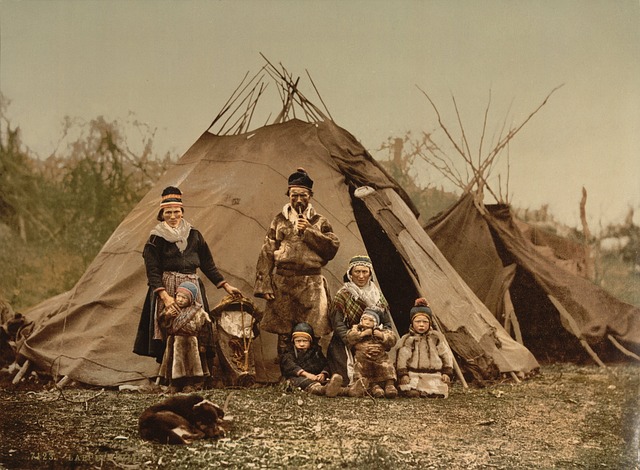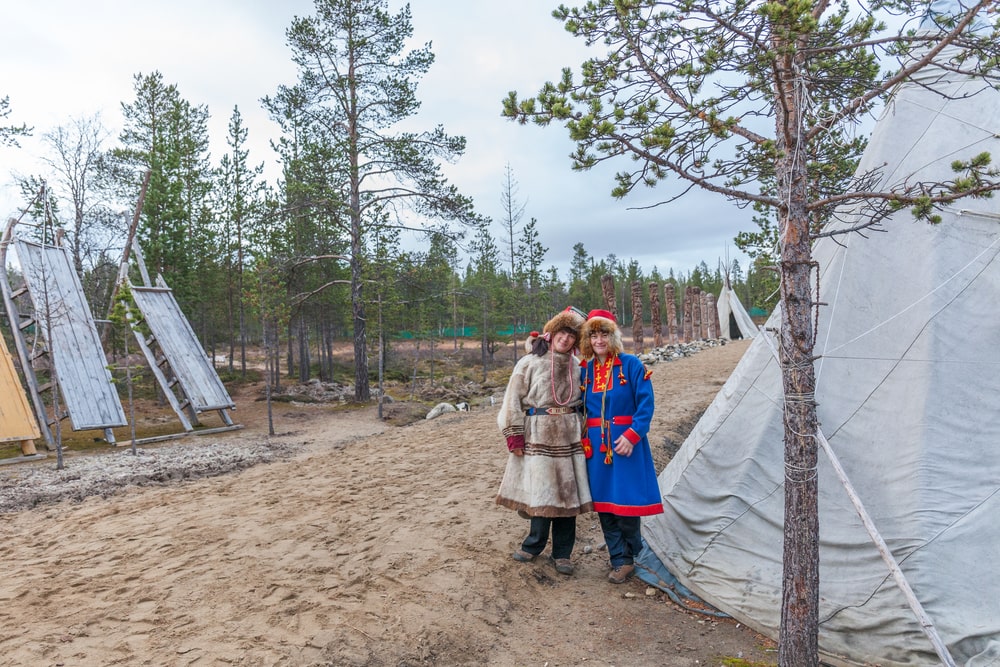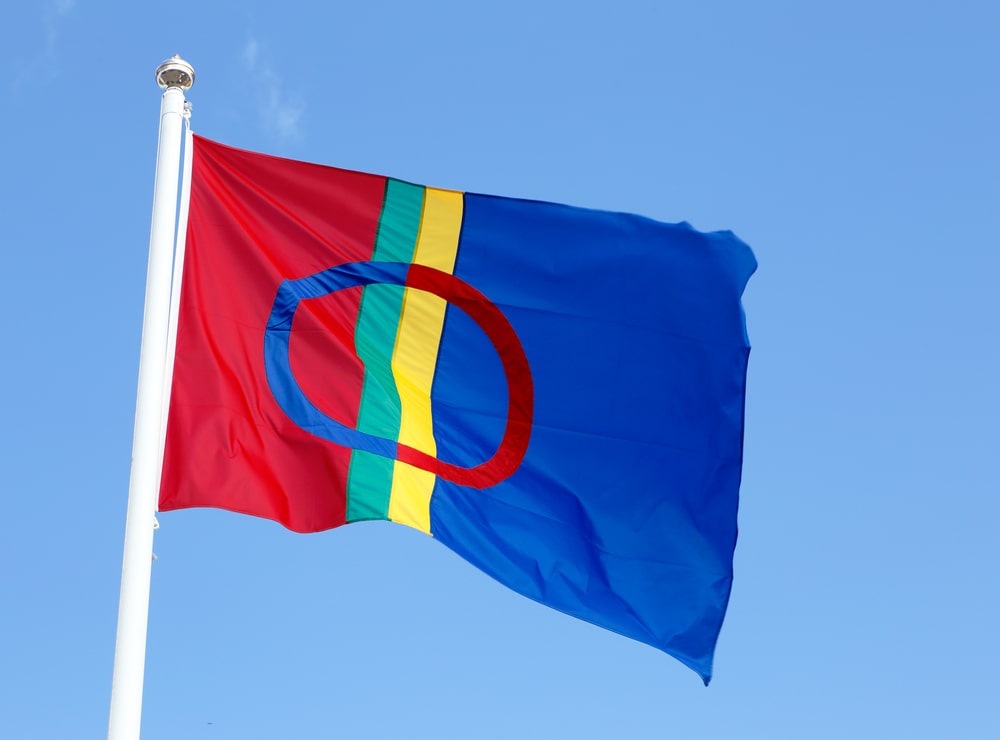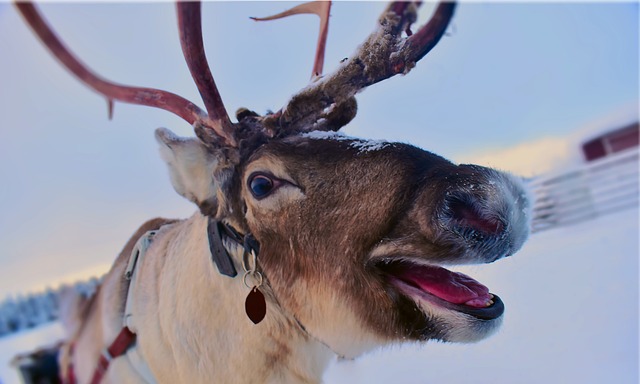Sami History & Culture in Norway
Nestled within the Arctic regions of Norway, Sweden, Finland, and Russia, the Sami people, also known as the Sámi, have cultivated a vibrant and resilient culture that stretches back thousands of years.
In this blog post, presented by Reindeer Sledding Tromsø, we embark on a journey to explore the rich tapestry of Sami heritage, delving into the traditions, history, and contemporary realities of this indigenous Arctic community. Through their unique language, cultural practices, and close relationship with reindeer herding, they have forged a distinct identity that continues to thrive amidst modernity.
Join us as we uncover the origins and traditions of the Sami people, delve into the historical context of their struggles and triumphs, and examine the intricate interplay between language, identity, and cultural preservation.
Origins and Traditions
The Sami people have been living in the cold lands of Norway, Sweden, Finland, and Russia for thousands of years. They have a fascinating history and many unique traditions that have been passed down through generations.
Long ago, the Sami lived by hunting and gathering food from the forests and lakes. They also herded reindeer, which has been a central part of their way of life for centuries. Reindeer provide food, clothing, and transportation for the Sami, and they are deeply respected animals in Sami culture.
The Sami also have their own language, called Sami, which is different from the languages spoken in the countries where they live. They use their language to tell stories, sing songs, and pass down their traditions to younger generations.
Traditional Sami clothing is also important. It’s often made from materials like reindeer skin, wool, and fur, and it’s designed to keep them warm in the harsh Arctic climate. Each piece of clothing has a special meaning and is decorated with intricate patterns that tell stories about the wearer’s family and heritage.
As you learn more about the Sami people, you’ll discover just how rich and fascinating their culture truly is!

Historical Context
The history of the Sami people is filled with both challenges and resilience. For many years, the Sami lived independently in their traditional lands, following their own customs and ways of life. However, things changed when other groups, like the Vikings and later the Norwegians, began to settle in the same areas.
Over time, the Sami faced pressure to assimilate into the dominant cultures around them. They were often treated unfairly and their traditional lands were taken away from them. This led to struggles and conflicts as the Sami fought to protect their way of life and preserve their cultural identity.
In the 19th and 20th centuries, the Norwegian government implemented assimilation policies aimed at forcing the Sami to abandon their traditional practices and adopt a more “modern” way of life. This included discouraging the use of the Sami language and forcing children to attend Norwegian schools where their own culture was not respected.
Despite these challenges, the Sami people have remained resilient and have fought hard to preserve their culture and traditions. Today, there is a growing recognition of the importance of Sami rights and culture, and efforts are being made to support and celebrate Sami heritage.

Language and Identity
The Sami language, known simply as Sami or Sámi, is a unique and ancient language spoken by the Sami people. It belongs to the Uralic language family, which includes languages like Finnish, Estonian, and Hungarian. With several distinct dialects, the Sami language reflects the rich diversity within Sami culture and communities.
For the Sami people, their language is more than just a means of communication; it is a vital expression of their cultural identity and heritage. Through the Sami language, stories of the land, traditions, and spiritual beliefs are passed down from one generation to the next. It serves as a connection to their ancestors and a source of pride for Sami communities.
However, the preservation of the Sami language has faced significant challenges throughout history. During periods of assimilation efforts by the government, the Sami language was often suppressed in favor of the dominant national languages. Sami children were discouraged from speaking their native language in schools, and official policies favored assimilation into the majority culture.
Despite these challenges, there has been a resurgence of interest in and commitment to revitalizing the Sami language in recent decades. Efforts to promote Sami-language education, literature, media, and cultural initiatives have been instrumental in strengthening the use and status of the language.
Organizations such as the Sámi Parliament in Norway and the Sámi Parliament in Finland advocate for language rights and support initiatives to preserve and promote the Sami language and culture.

Reindeer Herding
Reindeer herding is a cornerstone of Sami culture and livelihoods, deeply intertwined with their identity and heritage. Reindeer herding is not just a job for the Sami—it’s a way of life that requires deep knowledge of the land and the animals. Sami herders, often called “joikers,” use traditional methods passed down through generations to track and manage their herds.
These methods include using reindeer antlers to create distinctive markings on the animals, which help identify ownership within communal grazing areas.
The life of a reindeer herder is guided by the changing seasons. In the summer months, reindeer roam freely across vast tundra landscapes in search of food, guided by ancient migratory routes. During this time, herders monitor the health and movements of the herds, often traveling long distances on foot or by snowmobile.
In the winter, when the Arctic landscape is blanketed in snow and ice, reindeer herding takes on a different rhythm. Herders gather their reindeer into smaller groups and provide supplemental feed to ensure their survival through the harsh winter months. Traditional techniques, such as using lassos and snowmobiles, are employed to round up and transport the reindeer as needed.
Reindeer are more than just a source of food and livelihood for the Sami—they are a symbol of cultural identity and connection to the land. Reindeer herding is deeply ingrained in Sami culture, with rituals, songs, and stories passed down through generations celebrating the bond between humans and reindeer.
While reindeer herding has sustained Sami communities for centuries, modern challenges such as climate change, land development, and changing lifestyles have posed threats to traditional practices. Rapidly melting Arctic ice, encroaching industrialization, and loss of grazing lands all impact the ability of reindeer herders to maintain their way of life.
Despite these challenges, Sami herders are resilient and adaptive, finding new ways to navigate a changing Arctic landscape while preserving their cultural heritage.

Arts and Crafts
Sami arts and crafts, known as duodji, are an integral part of Sami culture, reflecting the creativity, skill, and ingenuity of the Sami people. These traditional handicrafts are not only beautiful but also practical, serving important functions in daily life.
One of the most iconic examples of Sami duodji is the intricately crafted traditional clothing worn by the Sami people. Made from materials like reindeer hide, wool, and fur, Sami clothing is designed to withstand the harsh Arctic climate while also being highly functional and stylish. Each garment is unique, often adorned with elaborate embroidery and beadwork that tell stories of family lineage and cultural heritage.
In addition to clothing, Sami artisans create a wide range of other handicrafts, including jewelry, tools, and household items. Traditional Sami jewelry, often made from materials like silver, pewter, and antler, is known for its intricate designs and symbolism, with motifs inspired by nature and traditional Sami beliefs.
One of the most fascinating aspects of Sami duodji is its sustainability and connection to the natural world. Many of the materials used in traditional Sami crafts, such as reindeer hide and antler, are sourced sustainably from the land, reflecting the Sami people’s deep respect for nature and their reliance on it for survival.
Contemporary Issues
While the Sami people have a rich cultural heritage, they also face contemporary challenges that impact their way of life and cultural identity. From land rights to environmental conservation, Sami communities navigate a complex landscape of issues in the modern world.
One of the most pressing issues facing the Sami people is land rights. Historically, Sami lands have been subject to encroachment and exploitation by governments and industries seeking to extract resources such as minerals, timber, and hydroelectric power. This has led to conflicts over land ownership and resource management, with Sami communities fighting to protect their ancestral lands and traditional territories.
Environmental conservation is another critical issue for Sami communities, who rely on the land and its resources for their livelihoods. Climate change, pollution, and habitat destruction threaten the delicate balance of Arctic ecosystems, posing risks to both wildlife and human communities. Sami herders, in particular, are impacted by changes in weather patterns and the availability of grazing land for their reindeer.
Cultural Events and Festivals
One of the most important events on the Sami calendar is Sámi National Day, held annually on February 6th. This day commemorates the first Sámi conference held in Trondheim, Norway, in 1917, where Sámi leaders gathered to discuss issues affecting their communities.
Today, Sámi National Day is celebrated with cultural performances, traditional food, and ceremonies honoring Sami history and identity.
Another highlight of the Sami cultural calendar is the Riddu Riđđu Festival, held each summer in Kåfjord, Norway. This multi-day event features a diverse program of music, art, film, and workshops, showcasing the best of contemporary Sami culture while providing a platform for dialogue and exchange among artists, activists, and community members.
In addition to these larger events, there are numerous smaller gatherings and festivals held throughout the year in Sami communities across the Arctic. These events celebrate everything from traditional reindeer races and yoik performances to storytelling, handicraft demonstrations, and culinary delights.
